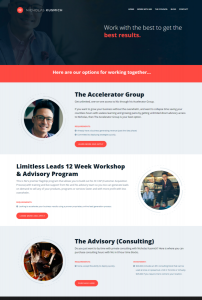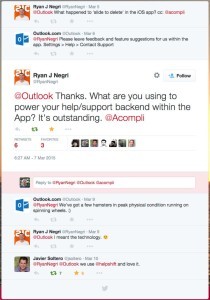For manufacturers and distributors, the supply chain is one of the best places to look for opportunities to cut costs, recover wasted resources, and increase profits. But what exactly does a lean supply chain strategy look like?
What is Waste in the Supply Chain?
Waste includes anything that is not adding value for your customers. Waste prevents you from getting products to your customers at the right price, as quickly as possible. A few examples of waste include:
Wasted time: This time spent waiting for things to happen, whether your production processes are on hold because you’re waiting for materials or your products are not arriving on time because of issues in manufacturing or transportation. This can also be time wasted doing manual tasks that could otherwise be automated.
Wasted space: Is there excess space in your warehouse? That is space you are paying to maintain that isn’t adding value to the customer; it’s just costing you money. Another quick example of wasted space could be maintaining paper files for long periods of time when reliable electronic files exist.
Wasted movement: Searching your warehouse for the items you need, or searching for paperwork, are prime examples of wasted movement. It can even include movements on your computer, such as having to move between programs or applications to find information or to complete a process.
There are many other examples of waste––wasted talent when your employees are not used to their full potential or wasted inventory when you have items in stock that aren’t turning fast enough. Lean supply chain planning is an opportunity to strategically eliminate the sources of waste that are most costly to your company’s business.
Where Does Waste Occur?
Essentially, waste can occur at any point in the supply chain, from the planning and sourcing of materials to sales and delivery. Areas to look at include:
1. Planning
One area many businesses fail to consider when trying to make their processes leaner is the planning process itself. This weakness can be at the root of issues elsewhere in the supply chain.
If your company sees planning as a static once-a-year process requiring a large amount of time and research to accomplish, implementing lean planning can help make this a more valuable and less costly process for your business.
Lean planning is a continuous process with once a month planning meetings and quarterly adjustments. It is flexible in the face of change––an essential consideration for rapidly growing companies––but requires access to solid data around forecasting to deliver maximum value.
2. Sourcing
Sourcing is another area where lean practices can often be applied. Lean procurement can involve eliminating unnecessary paperwork from the purchasing process, as well as eliminating staff activities that provide little or no value. Better processes lead to fewer mistakes, and can reduce the number of employees required to get the same amount of work done.
3. Manufacturing
Essentially, there are two schools of thought with regard to lean manufacturing processes. One is the model originally implemented by Henry Ford, where you plan inventory and staff levels to support the level of production you may need in the future––this might be based on projections or past production levels. The other is the Toyota school, where you maintain these levels only in anticipation of what you know you do need.
4. Delivery
Customer requirements should drive your lean transportation strategy, because transportation can be both a source of waste, as well as a differentiator. If customers expect rapid delivery, you’ll need to provide that in the least wasteful way possible. This means using high quality and reliable carriers, measuring their performance, and providing options to customers that meet their needs for timely delivery without excessive cost.
5. Returns
Another big area of waste is the returns process. Your lean supply chain strategy needs to minimize cost and waste due to shipping mistakes, returns, product quality issues and warranty issues. These are often ignored or are an afterthought, but they can have a big negative impact on your customers.
The process of studying all these areas to determine where waste is happening is called Value Stream Mapping. Value Stream Mapping studies the flow of materials as well as the flow of information from their point of origin, through you company, and on to the end customer. It enables you to see where the delays are in your processes, understand the restraints you must contend with, and to identify sources and locations of waste.
Developing a Lean Supply Chain Strategy
Once we understand the sources of waste, we can begin to develop a strategy to eliminate it. Lean strategies typically rely on a 3-step process:
1. Identify Waste
Where is waste occurring and what kinds of waste exist in your processes? You can use Value Stream Mapping to determine this. VSM looks at the entire process your company uses to get a product to your customer, from planning and sourcing raw materials, through sales, delivery and returns.
You will probably find multiple types of waste throughout your business and you probably cannot solve all of them at the same time. You’ll need to determine which ones are most detrimental to your business and solve them first. Later, you can continue to drive waste from your processes in other areas. This is the philosophy of continuous improvement that the Japanese – who developed many of the principles that underlie the “lean” philosophy – call “Kaizen.”
2. Analyze Waste and Identify the Root Cause
Once you’ve identified the sources of waste you most need to address, you need to figure out why it exists. In many cases, outdated processes may be a root cause. Paper based processes are a common form of waste throughout the supply chain––technology and more current best practices can provide solutions.
3. Solve the Root Cause and Repeat the Cycle
There are a number of problem-solving methodologies that your company can use to determine how to solve the root cause of the waste. What you need to do is simply define the problem, generate solution alternatives, evaluate and select the alternative that makes the most sense, and then implement it.
Lean supply chain is a huge topic, but understanding it and developing a strategy to eliminate as much waste as possible from your supply chain can pay big dividends in both value to the customer, as well as enhancing your company’s profit and growth.
Does your company have a lean supply chain strategy, or are you looking to implement one in 2016? Let us know about it in the comments.
Business & Finance Articles on Business 2 Community(41)


